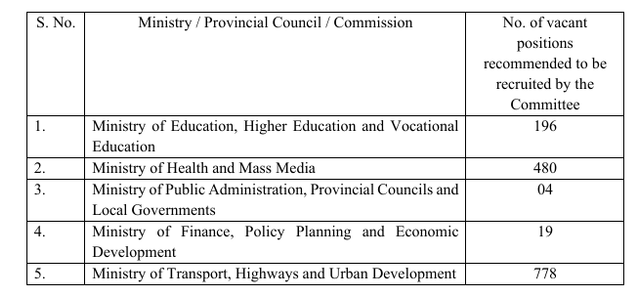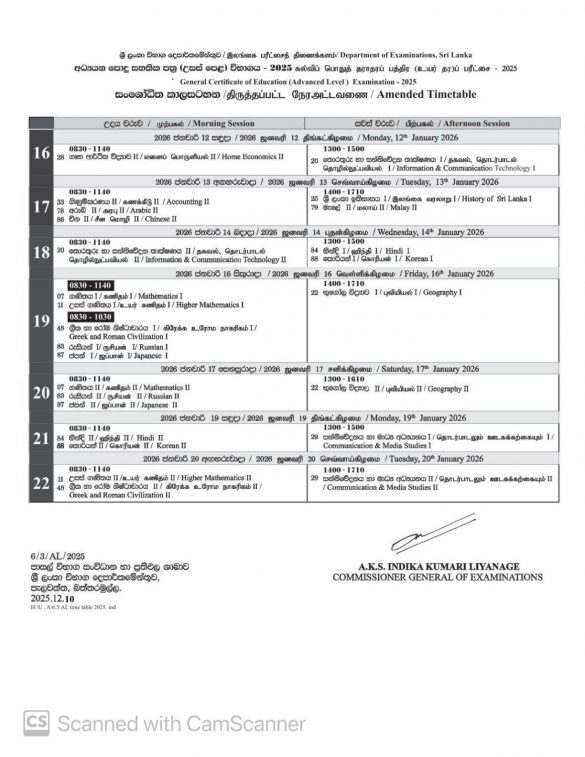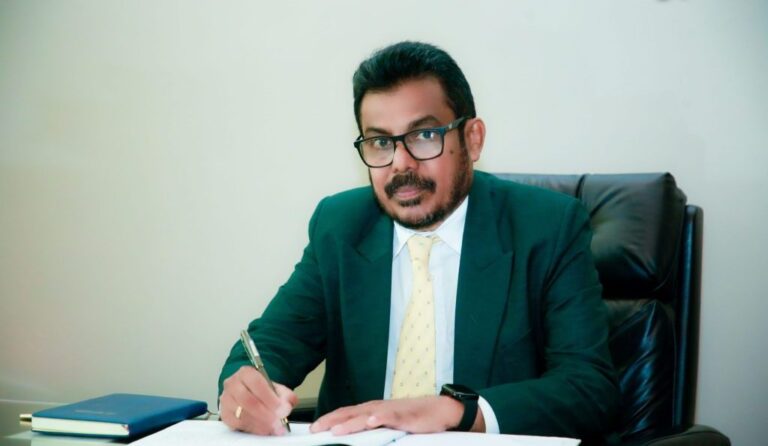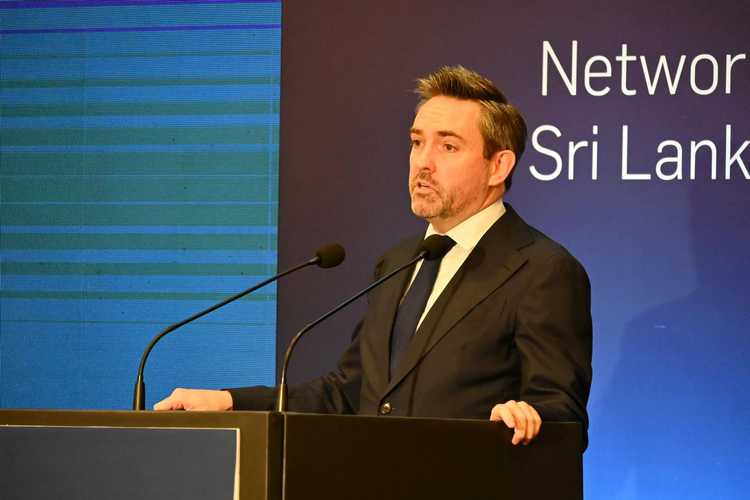December 12, Colombo (LNW): New details have surfaced about a road accident involving a jeep driven by former Speaker and sitting MP Asoka Ranwala, after it collided head-on with a car in the Denimalla area of Sapugaskanda on Tuesday night.
Police said the collision left three occupants of the car—a 25-year-old woman, her six-month-old baby, and the woman’s 55-year-old mother—injured. All were rushed to hospital shortly after the incident, and the infant was later transferred to the Lady Ridgeway Hospital for Children for more specialised care.
Mr Ranwala, who was at the wheel of the jeep, also sustained injuries and has been admitted to Ragama Hospital. Officers at the scene noted that although the roadway was not particularly busy at the time, visibility may have been reduced due to intermittent showers earlier in the evening.
Alongside the damaged jeep and car, a motorcycle that became entangled in the aftermath has been seized as part of the inquiry. Sapugaskanda Police have opened a full investigation to establish how the three-vehicle crash unfolded and whether further action is required.
Former Speaker Ranwala Injured in Late-Night Three-Vehicle Crash in Sapugaskanda
Widespread Rains Prompt Controlled Reservoir Releases Across Several Districts
December 12, Colombo (LNW): The Irrigation Department has reported substantial rainfall across several river catchments over the past day, with a number of basins recording in excess of 50 millimetres.
According to Eng. L. S. Sooriyabandara, who heads Hydrology and Disaster Management, the heaviest precipitation was observed in the upper sections of the Gin, Kalu, and Kelani rivers, as well as the Yan Oya basin. Parts of the Batticaloa District also experienced similarly intense showers.
While water levels in a few rivers have climbed noticeably as a result, authorities say they remain comfortably below thresholds that would trigger flooding. Even so, engineers are monitoring the situation closely, given the continuing unsettled weather.
Nearly three dozen major reservoirs are currently at capacity and spilling. To ease pressure and maintain safe operating levels, spill gates are to be opened at several key reservoirs, including Deduru Oya, Rajanganaya, Nachchaduwa, Yan Oya, Padaviya, Lunugamvehera, and Senanayake Samudraya.
Officials emphasise that these controlled releases are routine measures taken during periods of sustained rainfall to prevent structural strain and ensure downstream safety.
Showers, thundershowers to continue across SL: Fairly heavy falls about 50 mm expected (Dec 12)
December 12, Colombo (LNW): Showers or thundershowers will occur at times in Northern and North-Central provinces and in Puttalam and Trincomalee districts, the Department of Meteorology said in its daily weather forecast today (12).
Fairly heavy falls about 50 mm are likely at some places in Northern province.
Several spells of showers will occur at Uva province and in Matale, Kurunegala, Ampara and Batticaloa districts.
Showers or thundershowers may occur at several places in the other areas of the island after 1.00 p.m.
Fairly heavy falls about 75 mm are likely at some places in these areas.
Misty conditions can be expected at some places in Sabaragamuwa, Central and Southern provinces during the early hours of the morning.
The general public is kindly requested to take adequate precautions to minimise damages caused by temporary localised strong winds and lightning during thundershower.
Marine Weather:
Condition of Rain:
Showers will occur at several places in the sea areas off the coast extending from Puttalam to Pottuvil via Mannar, Kankasanthurai and Trincomalee.
Showers or thundershowers may occur at a few places in the other sea areas around the island during the evening or night.
Winds:
Winds will be north-easterly. Wind speed will be (30-40) kmph.
Wind speed can increase up to (50-55) kmph at times in the sea areas off the coast extending from Colombo to Mullaittivu via Puttalam and Kankasanthurai.
State of Sea:
The sea areas off the coast extending from Colombo to Mullaittivu via Puttalam and Kankasanthurai will be rough at times.
The other sea areas around the island will be moderate.
Temporarily strong gusty winds and very rough seas can be expected during thundershowers.
Government Secures Major World Bank Facility to Boost Grassroots Health Services
December 11, Colombo (LNW): The Government has entered into a new financing arrangement with the International Development Association of the World Bank Group, unlocking US$150 million to overhaul and modernise the country’s primary healthcare network.
The initiative, which will run from 2024 through 2028, will be rolled out nationwide and is designed to sharpen the country’s response to non-communicable diseases, expand services for older citizens, bolster palliative and home-based care, and strengthen community-level health capacity.
Officials also noted that the project places particular emphasis on preparing the health sector for increasingly frequent climate-related shocks.
One obstacle repeatedly highlighted in early assessments is the shortage of suitable transport for frontline health workers. Public Health Midwives, nurses, inspectors and surveillance teams often struggle to reach remote households, especially during adverse weather, limiting the consistency of community outreach.
In response, the Cabinet has endorsed a proposal from the Minister of Health and Mass Media to purchase a substantial fleet of vehicles to support district-level operations. The approved list includes:
– 26 lorries for transporting clinical waste
– 26 double-cab vehicles
– 5 ten-seater vans
– 2 buses with 42 seats
– 2,891 scooters for Public Health Midwives
– 200 scooters for Public Health Nurses
– 1,350 motorcycles for public health inspectors
– 200 scooters for laboratory services
– 20 refrigerated trucks for the Medical Supply Division
– 8 forklifts for the Medical Supply Division
– 1 crew cab for the Divisional Health Office in Puttalam
– A new ambulance complement for the Jaffna district
Health officials say the expanded fleet will significantly speed up fieldwork, improve consistency in home-visits, and ensure more reliable delivery of medical supplies. They also expect the effort to enhance the reach of community health teams and strengthen the country’s primary care foundation at a time when the demand for accessible, preventive services is rapidly increasing.
Government Clears Recruitment Drive to Strengthen Public Sector Workforce
December 11, Colombo (LNW): The government has authorised a major round of public-sector hiring, giving the green light for 2,284 new appointments to address long-standing staffing gaps across several ministries and state institutions.
This decision follows an earlier Cabinet move to adopt recommendations from a review panel tasked with examining the efficiency and coherence of government recruitment. In line with that mandate, a high-level committee—led by the Secretary to the Prime Minister—was established to assess workforce needs, prioritise essential roles and create a realistic timetable for filling vacancies.
The group is said to have carried out an extensive evaluation of current staffing patterns, identifying areas where shortages were beginning to undermine service delivery.
Ministries subsequently submitted detailed requests highlighting vacancies within their own departments and affiliated agencies. After examining these submissions, the committee endorsed a proposal from the Prime Minister to begin a targeted intake of new personnel.


Government Unveils Fresh Credit Lifeline for MSMEs Hit by Recent Disasters
December 11, Colombo (LNW): The government has announced a revamped financial support initiative aimed at helping micro, small and medium-sized enterprises regain their footing after the recent wave of natural disasters.
The new facility, titled RE–MSME PLUS, brings together several existing state-backed lending programmes—previously known as SMILE-III, E-FRIEND-II and RE-MSME—into a single, more flexible scheme intended to fast-track recovery and encourage investment.
According to officials, Cabinet approval has been granted to launch the upgraded scheme early next year. The authorities expect that roughly 130,000 business owners will benefit from a mix of rapid-release financial assistance and longer-term concessional support.
The initiative is designed not only to offer relief but also to strengthen the resilience of small-scale industries that form the backbone of the local economy.
Under the planned arrangement, eligible enterprises will have access to government-funded loans at an annual interest rate of just 3 per cent over a three-year period. The scheme will also include a grace period of up to six months, with borrowing limits set at Rs. 250,000 for micro-level ventures and Rs. 1 million for small and medium-scale businesses.
Officials say these terms are meant to ease cash-flow pressures and give affected entrepreneurs enough breathing space to rebuild operations.
Cabinet has also endorsed the continuation of the RE–MSME – Disaster Relief programme, with the President—acting in his role as Minister of Finance—greenlighting both initiatives. Authorities hope the combined effort will accelerate recovery in sectors hit hardest by the recent adverse weather, while encouraging businesses to adopt more sustainable and disaster-resilient practices in the long run.
UN Rallies Global Support for Sri Lanka’s Post-Cyclone Rebuilding Drive
December 11, Colombo (LNW): The United Nations has launched a fresh appeal to bolster Sri Lanka’s post-cyclone recovery, aiming to gather roughly US$35 million over the next few months to help restore essential services and support affected communities.
At a briefing in Colombo on Thursday, the UN’s top representative in the country, Marc-André Franche, explained that the organisation had worked closely with the Disaster Management Centre to map out urgent needs across seven key areas, following the havoc wrought by Cyclone Ditwah. Roads, housing, health services and livelihoods are among the sectors identified for swift assistance.
Franche stressed that the Sri Lankan government remains at the forefront of the relief operation, with the UN and a network of local and international partners stepping in to reinforce national efforts where required.
He also revealed that contributions totalling nearly US$10 million have already come through from a group of supporting nations, including Australia, Canada, members of the European Union, Switzerland, the United Kingdom and the United States. According to him, a further US$26 million will be sought through a coordinated push designed to ensure that aid reaches the most vulnerable communities efficiently.
In addition to immediate relief, Franche hinted that the UN hopes this funding drive will help Sri Lanka build greater resilience against future climate-driven disasters, noting that the scale of destruction caused by Cyclone Ditwah underscores the urgency of long-term preparedness.
Health Authorities Warn of Eye Infection Risk in Flood-Affected Areas
December 11, Colombo (LNW): The Health Promotion Bureau has issued a warning that eye infections, particularly conjunctivitis, could spread more easily in the wake of recent floods due to overcrowding in temporary shelters and public spaces.
Officials stressed the importance of good hygiene to protect against infection and limit transmission. Conjunctivitis, commonly known as sore eyes, is highly contagious and can be passed through direct contact, shared items, or contaminated surfaces. Typical symptoms include redness, swelling, itching, excessive tearing or discharge, light sensitivity, and crusting around the eyes.
The Bureau advised the public to adopt the following precautions:
– Wash hands thoroughly and regularly with soap and water
– Disinfect frequently touched surfaces
– Cover coughs and sneezes
– Clean contact lenses carefully and avoid using unclean lenses
– Seek medical attention if symptoms persist beyond a week
Authorities also warned against rubbing the eyes or sharing personal items such as towels, pillows, or eye drops, as these practices greatly increase the risk of spreading infection.
Members of the public were urged to share this advisory widely to help prevent further outbreaks in communities still recovering from the floods.
Sri Lanka Moves to Streamline Tax System and Boost Revenue
December 11, Colombo (LNW): Sri Lanka’s Finance Ministry and the Inland Revenue Department have convened a high-level meeting to discuss measures aimed at expanding the tax base, simplifying the filing process, and cutting red tape, according to an official statement from the ministry.
The session was led by Deputy Minister of Economic Development, Nishantha Jayaweera, and attended by Inland Revenue Commissioner General Rukdevi Fernando alongside senior department officials.
Officials were instructed to promote voluntary tax compliance and intensify public awareness campaigns to ensure taxpayers are better informed. The Deputy Minister emphasised the need to reduce obstacles in filing returns and to simplify forms wherever possible.
A key focus of the discussion was the formulation of a practical strategy for the Inland Revenue Department to achieve the government’s revised revenue targets for 2025. The 2026 budget raised the projected tax revenue for 2025 from Rs. 4,590 billion to Rs. 4,725 billion, marking a 2.9 per cent increase.
This upward revision reflects expected growth in income tax collections as well as levies on goods and services, including vehicle import duties. The income tax target was set 3.7 per cent higher at Rs. 1,210 billion, while levies on goods and services were increased by 6.5 per cent to Rs. 2,953 billion.
Revised A-Level Timetable Announced Following Weather Disruptions
December 11, Colombo (LNW): The Department of Examinations has unveiled a new schedule for the remaining papers of the 2025 G.C.E. Advanced Level exams, which were postponed due to severe weather affecting multiple regions of the country.
The rescheduled examinations are set to take place between January 12 and 20, 2026. The Department has issued the updated timetable alongside an official notice to ensure all candidates are informed.
The Commissioner General of Examinations confirmed that special arrangements will be made for students impacted by the recent adverse conditions. School candidates unable to sit their exams at their designated centres are urged to notify their school Principal immediately.
Principals must then inform both the Zonal Director of Education and the Commissioner of Examinations (School Examination Organisation and Results) of any disruptions.
Private candidates who face difficulties attending their scheduled centres are requested to contact the Department directly via the following:
Hotline: 1911
Telephone: 011 278 4537 / 011 278 6616 / 011 278 4208
Fax: 011 278 4422
Email: [email protected]











